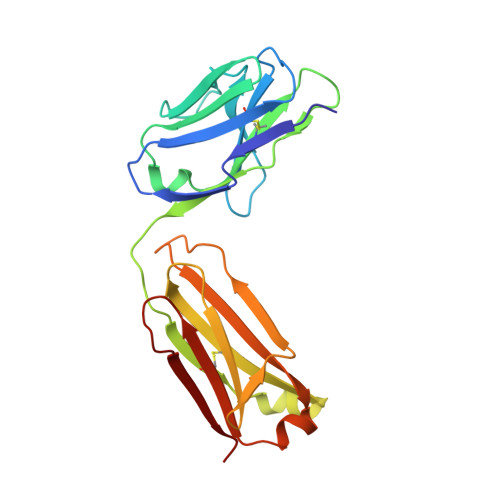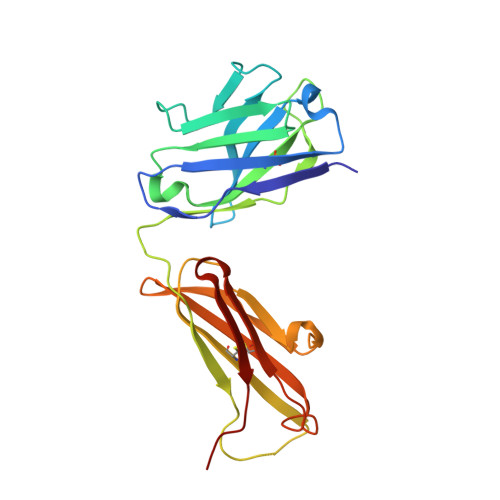Mosaic nanoparticle display of diverse influenza virus hemagglutinins elicits broad B cell responses.
Kanekiyo, M., Joyce, M.G., Gillespie, R.A., Gallagher, J.R., Andrews, S.F., Yassine, H.M., Wheatley, A.K., Fisher, B.E., Ambrozak, D.R., Creanga, A., Leung, K., Yang, E.S., Boyoglu-Barnum, S., Georgiev, I.S., Tsybovsky, Y., Prabhakaran, M.S., Andersen, H., Kong, W.P., Baxa, U., Zephir, K.L., Ledgerwood, J.E., Koup, R.A., Kwong, P.D., Harris, A.K., McDermott, A.B., Mascola, J.R., Graham, B.S.(2019) Nat Immunol 20: 362-372
- PubMed: 30742080
- DOI: https://doi.org/10.1038/s41590-018-0305-x
- Primary Citation of Related Structures:
5TR8 - PubMed Abstract:
The present vaccine against influenza virus has the inevitable risk of antigenic discordance between the vaccine and the circulating strains, which diminishes vaccine efficacy. This necessitates new approaches that provide broader protection against influenza. Here we designed a vaccine using the hypervariable receptor-binding domain (RBD) of viral hemagglutinin displayed on a nanoparticle (np) able to elicit antibody responses that neutralize H1N1 influenza viruses spanning over 90 years. Co-display of RBDs from multiple strains across time, so that the adjacent RBDs are heterotypic, provides an avidity advantage to cross-reactive B cells. Immunization with the mosaic RBD-np elicited broader antibody responses than those induced by an admixture of nanoparticles encompassing the same set of RBDs as separate homotypic arrays. Furthermore, we identified a broadly neutralizing monoclonal antibody in a mouse immunized with mosaic RBD-np. The mosaic antigen array signifies a unique approach that subverts monotypic immunodominance and allows otherwise subdominant cross-reactive B cell responses to emerge.
Organizational Affiliation:
Vaccine Research Center, National Institute of Allergy and Infectious Diseases, National Institutes of Health, Bethesda, MD, USA. kanekiyom@nih.gov.
















